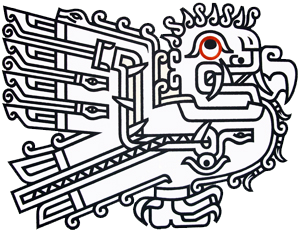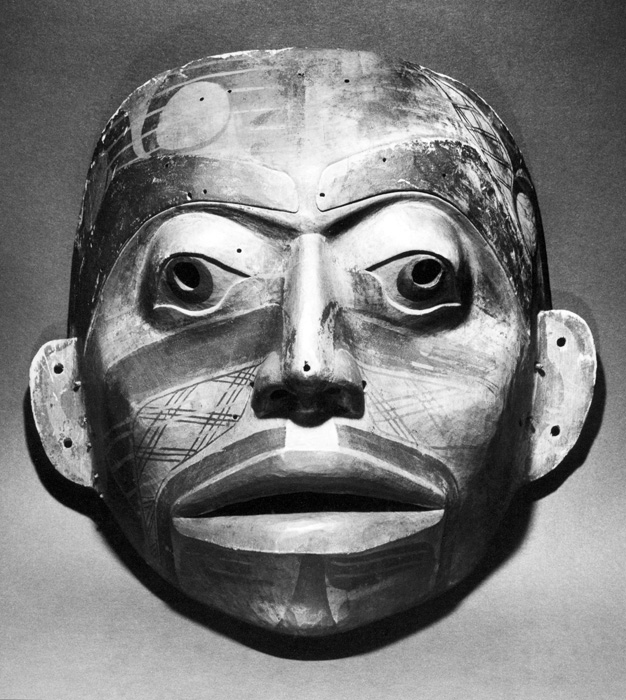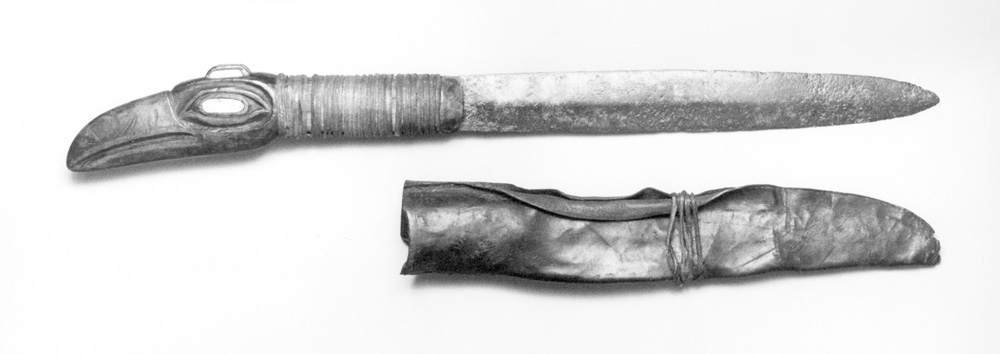The most unusual and bizarre of all Northwest Coast Indian masks are the Sxwayxwey masks. The translation of the name is uncertain; it is supposed to mean "things which fly around in a circle," an appropriate description of the ritual in which the masks are worn. Among the Coast Salish, it is actually only the Halkomelem who have a Sxwayxwey ritual, a component of a potlatch. If a chief has suffered an insult, or when the status of the bride of a chiefs son is to be elevated (for example, during a life crisis or a transition) a purification ritual is necessary. Two, four or more Sxwayxwey dancers appear in front of the house of the affected person and dance counter clockwise around a canoe filled with potlatch goods. They then approach the entrance to the house, from which steps the person in need of purification. He or she is led to the canoe by the dancers and seated in it. Up to this point, several women have been beating a steady rhythm on a large drum. They then begin to sing a song, and the dancers shake their shell rattles to the beat of the drum. The dancers approach the person in the canoe and brush cedar branches across his or her body. Four times the song and the purification ritual of the cedar are alternated. Finally, the dancers retreat with dragging steps to the tent next to the house, where they had prepared themselves for the ritual. The mask pictured is of the snake-face type, identifiable by the two snake heads, which resemble horns, and the undulating lines which start at the neck and continue past the "stem eyes." The shape at the chin is thought to be a snake with front feet. This mask dates from the turn of the century and belonged to the Nanaimo Halkomelem. (51 cm; NMM)
NMM = National Museum of Man, Ottawa























